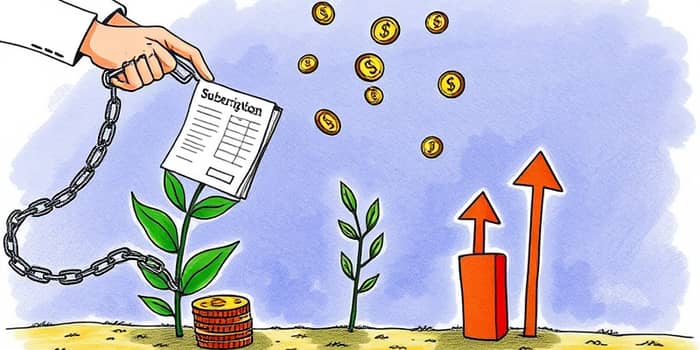
In today’s fast-paced financial landscape, regular, predictable payments can quietly erode budgets over time. By learning to identify and eliminate wasteful recurring costs, both households and businesses can unlock capital to fuel innovation, growth, and stability. This guide offers practical steps, real-world examples, and key tools to help you reclaim control over your finances.
Recurring expenses are payments made at consistent intervals—weekly, monthly, or annually—to maintain operations or lifestyle standards. These costs include rent or mortgage payments, utilities, insurance premiums, loan repayments, and software subscriptions. In contrast, non-recurring expenses occur irregularly, such as one-time equipment purchases or emergency repairs. Distinguishing between the two is crucial for accurate budgeting and effective cash flow forecasting.
Overlooking small subscriptions or failing to renegotiate service contracts can lead to a significant long-term impact on budgets. A thorough understanding of each recurring line item empowers individuals and organizations to make strategic financial decisions with clear vision.
Even seemingly minor recurring charges can accumulate, creating a constant drain on resources. Research indicates the average American household spends around $237 per month on subscriptions they seldom use. In business, unchecked software licenses or dormant memberships can quietly consume thousands annually. Removing these costs not only frees up capital for growth but also enhances agility in responding to market changes and unforeseen expenses.
Redirected funds can bolster emergency reserves, support strategic initiatives, and improve profit margins. By proactively managing recurring expenses, organizations and individuals position themselves for greater resilience against financial volatility.
Taking a systematic approach ensures no cost goes unnoticed. Follow these steps to achieve meaningful savings:
Certain recurring charges frequently slip under the radar, draining funds without delivering commensurate value. Watch for these common offenders:
Once unnecessary recurring expenses are eliminated, the newly available funds can be redirected toward high-impact areas. Businesses might invest in emerging technologies, team training, or targeted marketing campaigns. Families and individuals can bolster emergency savings, pay down high-interest debt, or contribute toward long-term goals like education and retirement.
For example, a small business cutting a $300-per-month software subscription can reallocate $3,600 annually to digital advertising, potentially driving sales growth. Similarly, a household canceling a $40-per-month unused membership frees up $480 yearly—enough to seed an emergency fund or finance a skill-building course.
Be mindful of contract terms, cancellation fees, and bundled discounts before terminating services. A hasty cut could inadvertently remove essential functionality or incur penalties. Always review renewal dates and assess whether partial downgrades or renegotiations offer a better balance between cost and value. Aim to limit unexpected financial burdens effectively by documenting decisions and monitoring outcomes.
Maintaining control over recurring expenses requires discipline and the right toolset. Consider these best practices:
By systematically auditing, categorizing, and challenging each recurring expense, you can unlock significant savings and strengthen financial health. Remember to assess usage, renegotiate rates, and utilize digital tools for continuous oversight. With streamline monthly spending for greater savings as a guiding principle, your redirected funds can fuel innovation, resilience, and long-term prosperity.
Start today: review your next bank statement, spot unattended subscriptions, and take the first step toward a leaner, more efficient financial future.
References













